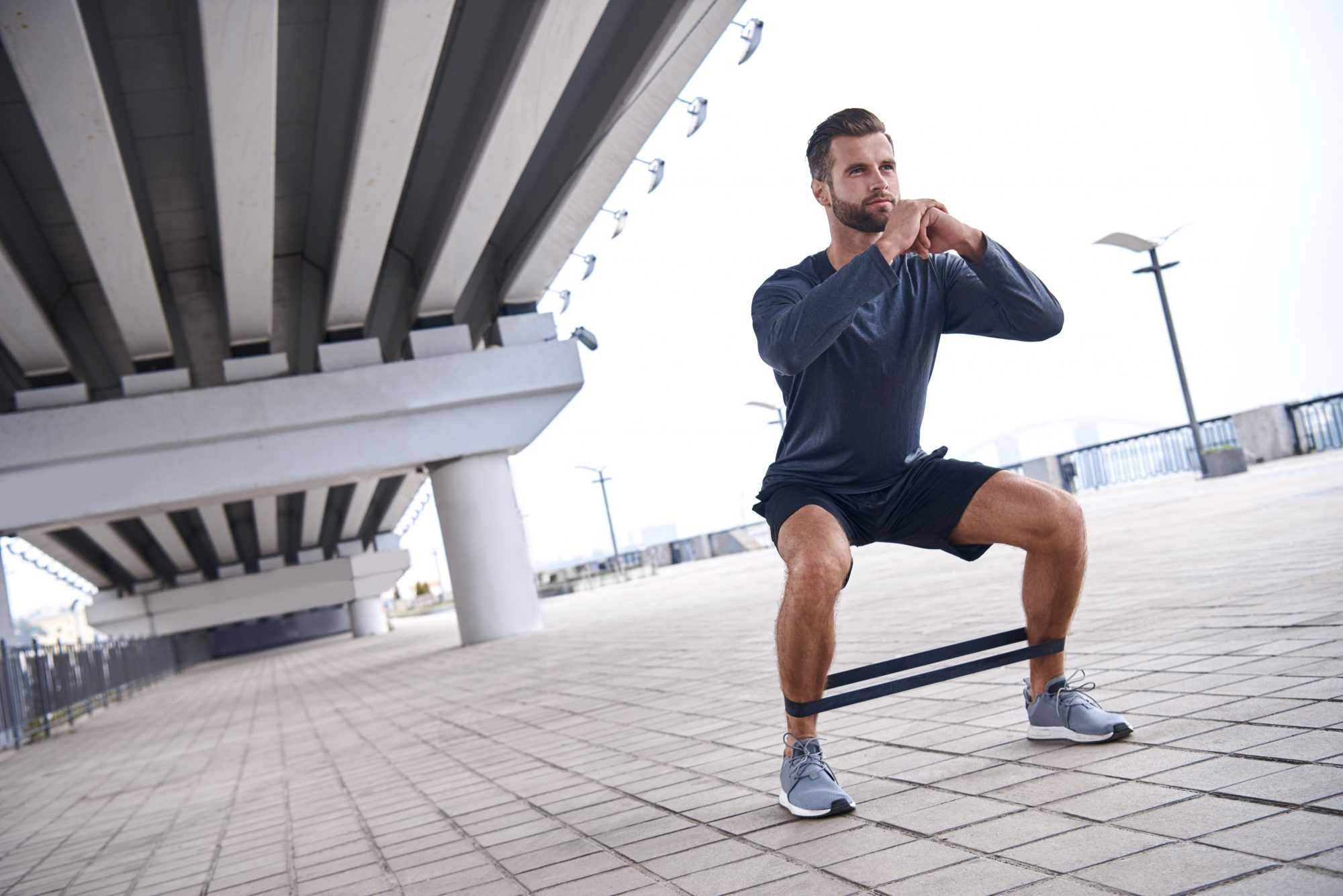
April 8, 2020, by Charlotte Gauja
How a Fitness Instructor trains at home and their top tips!
Since the social distancing rules were introduced many have been exercising in their gardens and living rooms with the aim of keeping fit and mentally strong during these more testing times. The introduction of our Health and Wellbeing home has provided members of the community with free access to live classes, tips on how to remain healthy and more whilst staying at home.
We caught up with University of Nottingham Sport Fitness Instructor, Andy Drummond, to see how a Fitness Professional trains at home:
“When I am training at home for an extended period of time, I like to incorporate new exercises into my workout routine due to space and equipment restrictions.
Even though I mainly train with free weights and have some at home, I simply don’t always have the appropriate amount of resistance for certain exercises, so am forced to change my workout.
I have a few dumbbells, kettlebells, bands and a barbell with 10, 15 and 20kg plates, therefore I can do a lot of standalone exercises. One of my top tips is to use just one set amount of weight on a piece of equipment, this could be a homemade medicine bag for example. When faced with one set amount of weight or piece of equipment, I can begin to become more creative with workout options. I find this scenario quite exciting and it has led me to test some very interesting training ideas.
If you have found training away from a fitness facility difficult and have started to plateau or stagnate, I recommend using the 3C’S training method: Clusters, Complexes and Combos.
Clusters
A cluster set has short rest periods built into it, rather than a traditional period of rest after the set. Think of clusters like one long extended set with mini breaks which allow you to train with challenging resistance for a longer period of time. Disclaimer- they can be very intense sets!
I’ve successfully used clusters working with resistance that would allow for 5 challenging, yet fairly comfortable reps, maybe allowing for 6-7 at a push before complete technical failure, this is where your technique decreases becomes extremely questionable! For example you would complete the following during a challenging ‘5’:
2 reps
Rest a little (10 or so seconds)
3 reps
Rest a little (10-20 seconds)
5 reps
So, the little rest periods allows for 10 total reps with a weight you would normally do 5 reps with. You approach it with the mentality of “If I can do 2 reps I can probably push out 3 reps with a bit of rest. Well if I’m going for 3 reps I may as well add an extra 2 to that to make 5 reps”.
Combos
When working with light weights I advise using combinations of exercise to keep the intensity high. Examples of this are bicep curls into shoulder presses and straight-leg deadlifts into a bent-over row. Granted in terms of strength development you would be better suited training the movements as standalone exercises, but your goal with combos would be increasing intensity and perhaps improving balance and coordination. Once you’ve mastered some combination movements you may look into advancing them by incorporating 2 movements at the same time, for example looking towards things like lunges into presses.
Complexes
Complexes are similar to circuit training, in that you go from one movement to another for perhaps 4-6 exercises. The difference lies in the fact that you have no rest between exercises and the dumbbell, kettlebell or barbell doesn’t leave your hands until you’ve completed the last rep of the last exercise in the sequence (unless you are using a single kettlebell or dumbbell, which you would have to transfer across). Often the weight you press overhead would limit the amount of resistance you use and it does require a bit of trial and error, but complexes are great for high-intensity workouts (and grip work!).
Top tip: If you have a bar, it’s a good idea to let the bar pass over your head at least once in the sequence otherwise start with an exercise with the weights on the floor and work your way up until you are pressing overhead.
A simple sequence:
Deadlift-squat-press
An advanced sequence:
Deadlift-power clean-front squat- shoulder press- back squat- good-morning
You have a bit of freedom to play around with equipment, sets, reps and rest periods with complexes to increase/decrease intensity. You could, for example, do 2-3 sets of 5 reps of each movement in the sequence, or look to work with descending reps over multiple sets (8, 6, 4, and 2 for a total of 4 sets).
See if you can add clusters, combos and complexes into your home workout programmes. You can find examples of the movements in our exercise library on our Instagram page.
For more top tips on working out at home and staying healthy visit our Health and Wellbeing Home.
No comments yet, fill out a comment to be the first

Leave a Reply